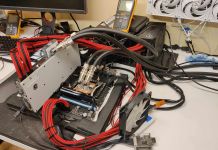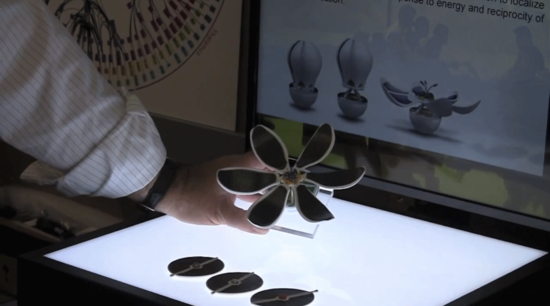Earlier this week we wrote about how scientists managed to simulate a second of brain activity with a supercomputer. Not entirely unrelated IBM has announced they are working an entire platform with hardware and software, developed from the ground up with the brain as the starting point.
Many think of the brain as the next big step for understanding biological systems. We still have a lot to learn about the complicated mechanisms we find in nature, but none of these are as advanced as the brain or for that matter even remotely understood. Now that we have decades of computer science backing us up a large portion of our research is spend on trying to understand what is the human psyche.
A tenth of the neurons of the cerebral cortex, randomly arranged, were simulated by the supercomputer Fujitsu K with nearly 90,000 processors. The simulation was run through software, so the question many are wondering is what we could accomplish with a processor built for this very purpose.
Tailored silicon or software simulation
IBM’s new project is not that far off from achieving this. It is in cooperation with SYNAPSE, a project running under DARPA that aims to construct circuits modeled after neurologic systems, where among others IBM is involved.
The next step for IBM is to develop a software platform tailored for a brain-inspired processor architecture, and the work has lead to several interesting deviations from traditional architecture and programming, but also many common traits.
”Architectures and programs are closely intertwined and a new architecture necessitates a new programming paradigm. We are working to create a FORTRAN for synaptic computing chips. While complementing today’s computers, this will bring forth a fundamentally new technological capability in terms of programming and applying emerging learning systems.”
– Dr. Dharmendra S. Modha, IBM Research
Among others programs can be built and described using Corelets that is somewhat similar to pieces of complete code in traditional programming languages. Corelets are more like blueprints of simulated brain cells, arranged to execute specific functions. They are adjusted to be relatively simple for programmers to use, and a programmer can considered them a predefined function – they know what kind of information that can be fed into it, and what kind comes out, and doesn’t need to understand how the neurons are arranged to execute the task.
In that way IBM hopes to make the technology available to more people than just scientists and engineers, and the programming should also be able to run on traditional circuits, although with a bit more work. In the same way as traditional programming languages offer libraries of code snippets Corelets combined in libraries.
As base for the development of software for traditional circuits the company has presented a simulator, multi-threaded of course, that can simulate neurons. A supercomputer can do this efficiently thanks to having access to thousands of threads, but it opens a door for doing tasks on less costly hardware.
Concept products that ”think”
In a video it presents several concept models for technology that could benefit from the platform. Among others it presents a concepts for glasses for severely visually impaired that can use front-mounted cameras to process video over this kind of circuits and programming, which can then recognize furniture or other obstacles in a room or describe the area to the user via sounds.
Ett annat koncept är ”conversation flower”, som med hjälp av flera mikrofoner och kameror kan lyssna på en konversation mellan flera personer, känna igen individuella röster från deltagarna och rent av känna av om en konversation börjar bli repetitiv och tråkig, och signalera detta genom att öppna och sluta sina ”blad”.
These are just concept products, but not unthinkable in the near future with the kind of architecture and programming that IBM has suggested. When we will actually something like this in retail is hard to say and depends on several factors, among others how easy the SYNAPSE circuits will be to manufacture, how demanding the simulation on other circuits is and how demanding the programming is in the end.
No matter when we can let a robot flower judge when our conversations become dull or not it is an impressive example of technology that uses biological systems as the starting point for thinking outside the box.






















Leave a Reply